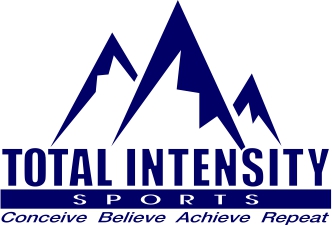
In the sport of triathlon, the training isn’t simply swimming, biking and running. The foundation of your tri-training needs to be a well-rounded strength training program centered on functional strength movements.
I touched on functional training in my article last month when I talked about staying injury-free during training. Functional strength not only gets you stronger, but the strength it develops makes you more stable and as a result, less prone for injuries.
I’ve had many athletes who have experienced nagging injuries until they devote themselves to their strength and core training. Then, magically, they start to swim, bike and run better, without the normal pains they grew accustomed to from their injuries. Occasionally, they think they are “cured” and back off on the strength work, only to have those aches and pains creep back. But, once they refocus and become consistent with their strength training, their body gets more stable and handles the rigors of endurance training without the aches and pains.
One of the keys, besides just using the right types of exercises, is the need for strength training twelve months out of the year. There might be a little more time spent in this area during the off-season, but there should always be some functional strength training. In-season, simply a couple of hours each week is all you really need. Off-season, we try to get our athletes to get at least four hours each week, with a changing variety of exercises. Consistency is really important – neglecting to work your stabilizing and core muscles will cause them to deteriorate.
The term “functional” is also important. These are exercises and movements that require you to engage and use muscles other than the “targeted” muscle groups. They require balance because they are done on one leg or with something that has some degree of instability.
The strength training programs we develop for Total Intensity athletes are diverse, we adjust the exercises every few weeks to promote muscle confusion. We want to work the same muscles, just in varied manners so they don’t get used to the same movements every session. Below are some of my favorite exercises.
Hamstrings: Dead Lift, Single Leg
 Hold kettlebell in one hand, hanging to the side. Stand on one leg (opposite side as the kettlebell).
Hold kettlebell in one hand, hanging to the side. Stand on one leg (opposite side as the kettlebell).- Keeping that knee slightly bent, perform a stiff-legged deadlift by bending at the hip, extending your free leg behind you for balance. Continue lowering the kettlebell until you are parallel to the ground, and then return to the upright position.
- Repeat for 15-20 repetitions, then complete with the opposite leg.
Hips/Glutes: Lateral Band Walk (Sumos)
 Position a band around your lower legs or ankles. The resistance can be applied closer to the knees for an easier movement or around the ankles or feet for a more advanced movement. With the band in place, assume an athletic standing position, with the knees and hips slightly bent, feet shoulder-width apart, and the head and chest up. This will be your starting position.
Position a band around your lower legs or ankles. The resistance can be applied closer to the knees for an easier movement or around the ankles or feet for a more advanced movement. With the band in place, assume an athletic standing position, with the knees and hips slightly bent, feet shoulder-width apart, and the head and chest up. This will be your starting position.- Staying low, take a slow, lateral step. Keep toes pointed forward and stay low.
- After completing the step, follow with the opposite leg. Step slowly, resisting the band. Keep the feet at least shoulder width apart to maintain band tension.
- Continue to laterally step in this manner to complete the set for 15-20 repetitions before switching to walk in the opposite direction.
Quads: Split Squat
 Position yourself into a staggered stance with the rear foot elevated and front foot forward. Hold a dumbbell in each hand, letting them hang at the sides. This will be your starting position.
Position yourself into a staggered stance with the rear foot elevated and front foot forward. Hold a dumbbell in each hand, letting them hang at the sides. This will be your starting position.- Begin by descending, flexing your knee and hip to lower your body down. Maintain good posture throughout the movement. DO NOT bounce – keep the movement slow and in control.
- Keep the front knee in line with the foot as you perform the exercise. At the bottom of the movement, drive through the heel to extend the knee and hip to return to the starting position.
- Repeat for 15-20 repetitions, then complete with the opposite leg.
Hamstrings/Glutes: Single Leg Bridges
 Lay on the floor with your feet flat and knees bent.
Lay on the floor with your feet flat and knees bent.- Raise and straighten one leg off of the ground. This is your starting position.
- Execute the movement by driving through the heel, extending your hip upward and raising your glutes off of the ground.
- Extend as far as possible, pause and then return to the starting position.
- Repeat for 15-20 repetitions, then complete with the opposite leg.
Ankle/Hip/Leg Stability: Single Leg Stands, Bosu
- Stand on the Bosu Ball on the left leg and stabilize yourself with a slight bend in your knee. Try to limit the degree you are leaning forward. Standing more vertical with your hips under your shoulders is preferred. Do NOT stand with a straight leg.
- Hold your balance in this position for 30-45 seconds before completing a set on the opposite leg.
These are just a few exercises which will help develop more stability and core strength. Ease into them, as you should with any strength training program. If you’re looking for more information or have questions on how to improve your strength training, just reach out to me here.
Without challenging yourself, there is no change.








